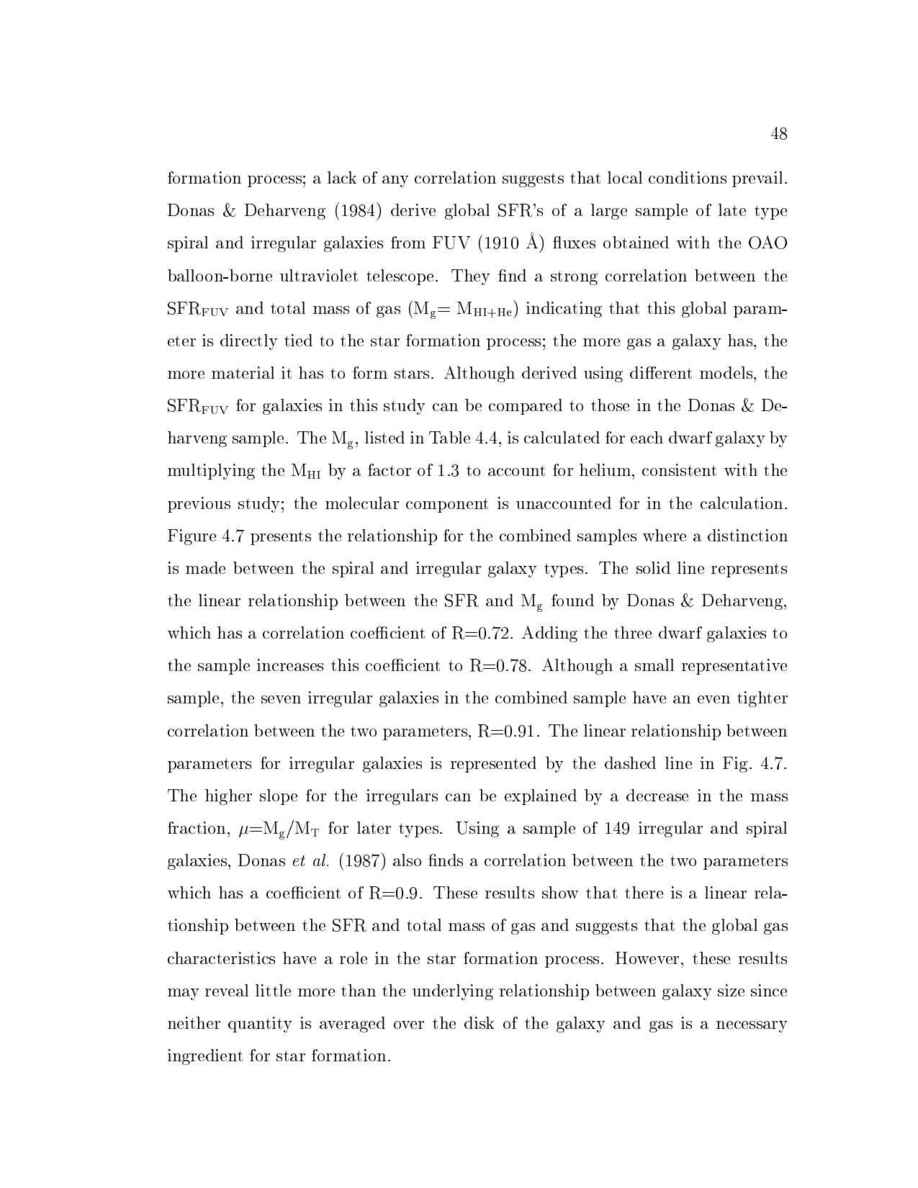
48
formation process; a lack of any correlation suggests that local conditions prevail.
Donas & Deharveng 1984 derive global SFR's of a large sample of late type
spiral and irregular galaxies from FUV 1910 A uxes obtained with the OAO
balloon-borne ultraviolet telescope. They nd a strong correlation between the
SFR
FUV
and total mass of gas M
g
= M
HI+He
indicating that this global param-
eter is directly tied to the star formation process; the more gas a galaxy has, the
more material it has to form stars. Although derived using di erent models, the
SFR
FUV
for galaxies in this study can be compared to those in the Donas & De-
harveng sample. The M
g
, listed in Table 4.4, is calculated for each dwarf galaxy by
multiplying the M
HI
by a factor of 1.3 to account for helium, consistent with the
previous study; the molecular component is unaccounted for in the calculation.
Figure 4.7 presents the relationship for the combined samples where a distinction
is made between the spiral and irregular galaxy types. The solid line represents
the linear relationship between the SFR and M
g
found by Donas & Deharveng,
which has a correlation coe cient of R=0.72. Adding the three dwarf galaxies to
the sample increases this coe cient to R=0.78. Although a small representative
sample, the seven irregular galaxies in the combined sample have an even tighter
correlation between the two parameters, R=0.91. The linear relationship between
parameters for irregular galaxies is represented by the dashed line in Fig. 4.7.
The higher slope for the irregulars can be explained by a decrease in the mass
fraction,
=M
g
M
T
for later types. Using a sample of 149 irregular and spiral
galaxies, Donas
et
al.
1987 also nds a correlation between the two parameters
which has a coe cient of R=0.9. These results show that there is a linear rela-
tionship between the SFR and total mass of gas and suggests that the global gas
characteristics have a role in the star formation process. However, these results
may reveal little more than the underlying relationship between galaxy size since
neither quantity is averaged over the disk of the galaxy and gas is a necessary
ingredient for star formation.
